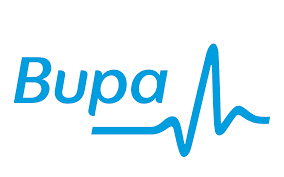Have you considered acupuncture treatment for a medical condition? Do you know what acupuncture is and what’s involved? If you’ve never had acupuncture before, you may have many questions about this type of treatment.
We understand your questions and concerns. In this article, we’ll explain what acupuncture is, what’s involved with this type of treatment and more. Let’s get started!
What is Acupuncture?
Many people are a bit taken aback at the thought of needles being inserted into their skin. How could this possibly make you feel better? And what about pain? Is this a painful treatment? And what on earth is acupuncture anyway?
Acupuncture is a traditional type of Chinese medicine that’s been in use for over 2,500 years. It is used to treat a wide variety of medical conditions. Treatment is done with very fine needles that are inserted into specific points on the skin. This is a minimally invasive form of treatment and it’s often used to stimulate nerves across the skin. The goal is to help the body to heal itself by stimulating certain areas on the skin, which in turn stimulate glands, organs and other body functions to bring about healing.
Each needle does create a tiny injury where they’re inserted. The treatment is usually painless, but you may feel a little discomfort. The needles work to create a response in the body to stimulate the immune system, increase circulation in the area, help with pain and more.
What is the Principle Behind Acupuncture?
The Chinese principle behind this form of treatment is complicated. In Chinese medicine, it is believed that the body needs to be in a harmonious balance in order to be healthy. Health is achieved when the body’s “qi” (pronounced “chee”) or energy flow is balanced. There are two sides to this energy—yin and yang—which must be in balance. Illness comes when these forces become unbalanced.
Chinese medicine believes that qi flows through specific meridians and pathways in the body. These meridians and pathways can be influenced and accessed through 350 acupuncture points on the body.
To achieve balance, acupuncture needles must be inserted in the right combinations to bring the energy flow back into balance again.
For medical acupuncture treatments, the same methods are used to stimulate nerves under the skin and in the muscles of the body. This causes the body to release endorphins, which are natural pain relievers produced in the body.
No matter what you believe about the concept of qi, acupuncture has been shown to be a useful treatment for many types of medical issues.
What Can Acupuncture Treat?
Some patients find acupuncture can help with some of the symptoms and side-effects of:
- Allergies
- Anxiety and depression
- Osteoarthritis
- Chronic pain (of the neck, back, knees, head)
- Hypertension
- Insomnia
- Menstrual cramps & PMS
- Migraines
- Headaches
- Gastrointestinal issues (including chemo-related and postoperative nausea & vomiting)
- Morning sickness
- Labour pain
- Dental pain
- Sinus problems
- Sprains
- Alcohol dependence (and other substance abuse conditions)
- Facial pain
- Sciatica
- Stress
- Fibromyalgia
- PTSD and other emotional pain syndromes
- Infertility (as an aid in become pregnant; it is sometimes used in addition to IVF treatments)
- Respiratory conditions
While the list may appear as if acupuncture is a cure-all, this simply isn’t the case. However, it has been proven to be effective for these and other medical conditions.
What Should I Expect During an Acupuncture Session?
On your first visit to the acupuncturist, they will ask you questions about your medical history. In addition, they may examine your tongue, feel your pulse (to determine energy flow) and ask questions about your diet and bowel habits. While these may seem like strange questions, they are necessary. The acupuncture practitioner wants to make a thorough assessment of your health and then make the right diagnosis. Some acupuncturists may treat your medical condition and any other underlying health issues you may be having.
After the exam, the practitioner will determine the right course of treatment. This means they will choose the right points where to insert the needles. The needles are placed on specific energy pathways and meridians that can help relieve your medical condition.
Sessions may last anywhere from 20 to 30 minutes, depending on your condition. During the treatment, don’t be surprised if the practitioner dims the lights and puts on some quiet music. This is done to help you relax. After the needles are place, the acupuncturist may leave you for a while. This is normal, though they should come in and check on you during the sessions to make sure you’re comfortable. Don’t be surprised if you become so relaxed that you fall asleep during this treatment.
How Will I Feel After a Treatment Session?
Most people generally feel very relaxed, while others feel more energetic. You should not be in pain or feel anxious after your treatment session.
What Type of Needles are Used for Acupuncture?
You may be thinking about the types of needles that are used to give vaccinations or take blood. These do cause pain because they’re hollow. Acupuncture needles are quite different.
Needles used for acupuncture are solid and made of stainless steel. They are very fine—about the width of a strand of hair. These needles go in between tissue, which makes them less painful.
Does Acupuncture Cause Pain?
Keep in mind that the acupuncturist doesn’t want to cause you pain. However, it is common to be slightly more sensitive on some areas of the body than others. For instance, the stomach and back are less sensitive areas, while some points on your hands and feet may be a little more sensitive.
If you are uncomfortable or feel any pain during the treatment session, be sure to let your acupuncturist know. They may adjust the needles or may choose other insertion points. They really don’t want you to hurt.
The goal of acupuncture is to treat health issues and restore the body to health. This is usually not a painful treatment, and it can bring relief for a wide variety of medical conditions.





